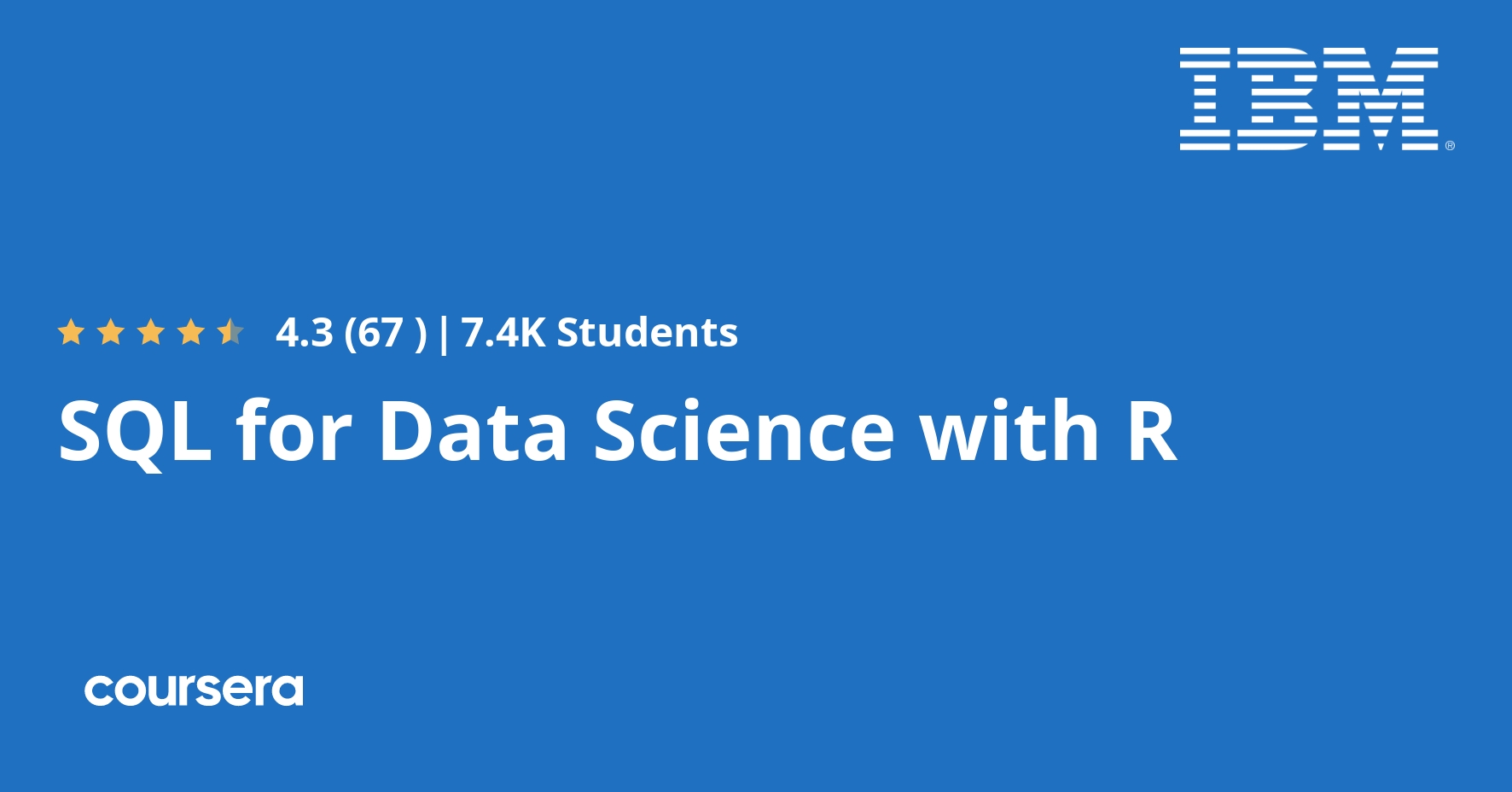Description
Much of the world’s data resides in databases. SQL (or Structured Query Language) is a powerful language which is used for communicating with and extracting data from databases. A working knowledge of databases and SQL is a must if you want to become a data scientist.
The purpose of this course is to introduce relational database concepts and help you learn and apply foundational knowledge of the SQL and R languages. It is also intended to get you started with performing SQL access in a data science environment.
The emphasis in this course is on hands-on and practical learning. As such, you will work with real databases, real data science tools, and real-world datasets. You will create a database instance in the cloud. Through a series of hands-on labs, you will practice building and running SQL queries. You will also learn how to access databases from Jupyter notebooks using SQL and R.
No prior knowledge of databases, SQL, R, or programming is required.
Anyone can audit this course at no charge. If you choose to take this course and earn the Coursera course certificate, you can also earn an IBM digital badge upon successful completion of the course.
What you will learn
Getting Started with SQL
Structured Query Language, or SQL, provides a standard language for selecting and manipulating data in a relational database. Understanding SQL is a foundational skill that you must have when applying data science principles in R because SQL is the key to helping you unlock insights about the information stored deep inside relational databases. In this module, you will learn some basic SQL statements and practice them hands-on on a live database.
Introduction to Relational Databases and Tables
In this module, you will explore the fundamental concepts behind databases, tables, and the relationships between them. You will then create an instance of a database, discover SQL statements that allow you to create and manipulate tables, and then practice them on your own live database.
Intermediate SQL
In this module, you will learn how to use string patterns and ranges to search data and how to sort and group data in result sets. You will also practice composing nested queries and execute select statements to access data from multiple tables.
Getting Started with Databases using R
In this module, you will learn the benefits of using R to connect to relational databases and how to persist R database objects in files. You’ll also learn some of the similarities between R data frames and relational databases, including how data types compare and when you must convert from one type to another to improve the effectiveness of your data analysis. Finally, you’ll learn different methods for connecting to a database from R.




